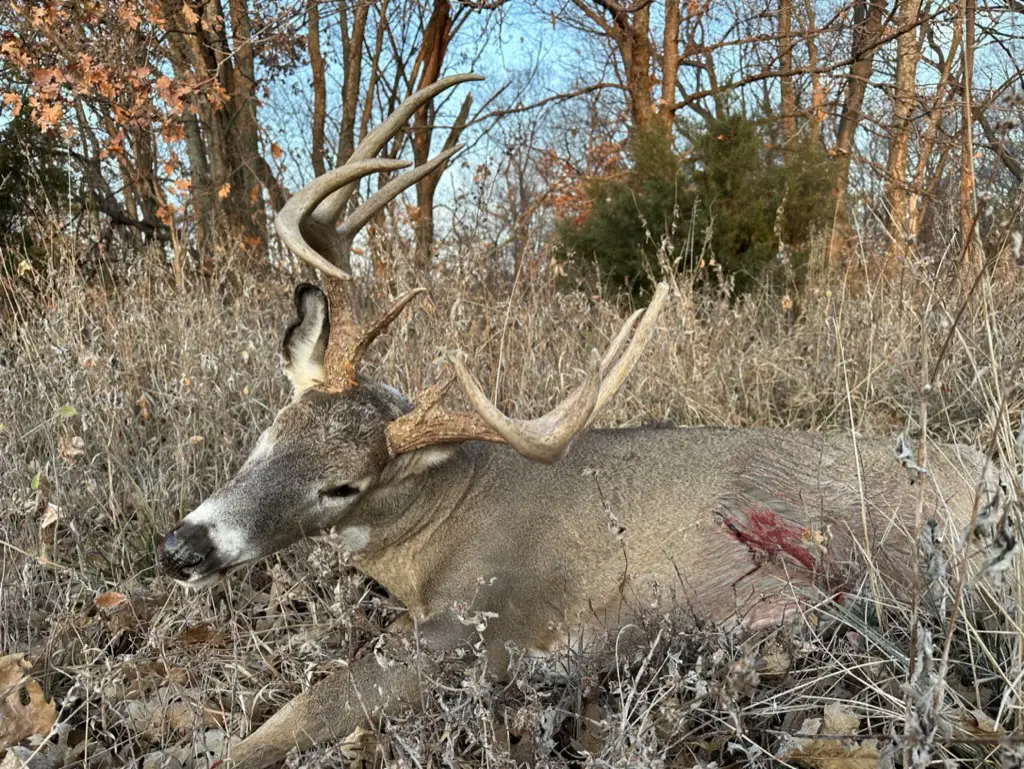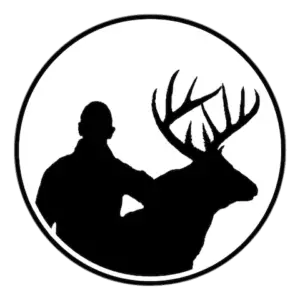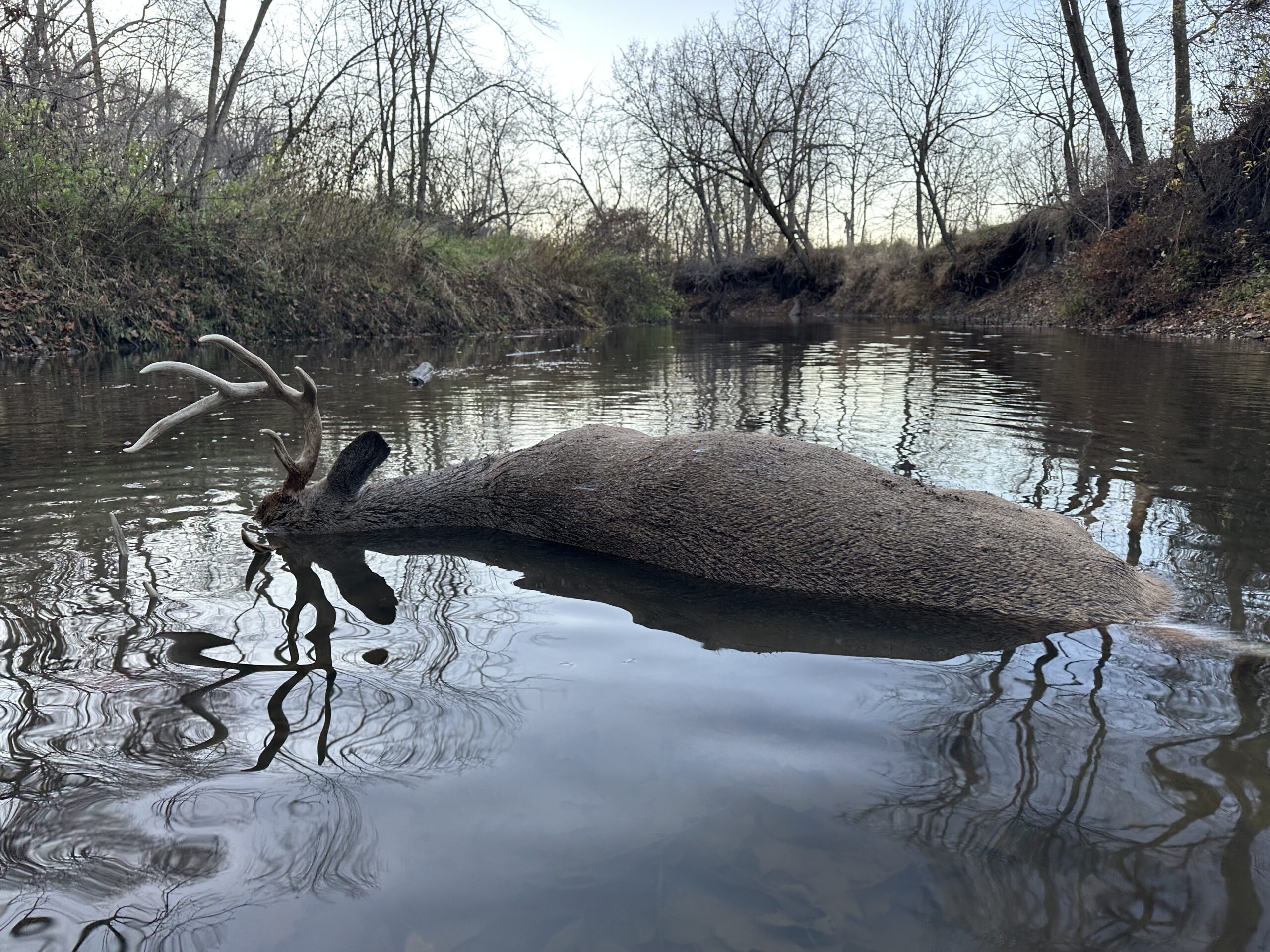There are several reasons for asking where deer go when they die. Perhaps you hit one with a vehicle, shot one with a bow or gun, or maybe you’re just curious where they go to die when they are sick. I have been a deer hunter and a student of deer behavior for a long time. So, in this article I’m going to talk about each one of these situations to give you an idea where deer die. Before we jump in, let me make some generalizations about where deer go to die.
Deer die from a variety of causes and they don’t all go to the same sort of place to expire. However, deer are commonly found dead in water, or near water, when they experience fever or a sudden loss in blood. If a deer doesn’t experience a sudden loss in blood or have a fever, you can likely find them within bedding areas that they associate with safety.
Where do deer go to die after being shot by a gun or bow
If a deer doesn’t die within the first few minutes after being shot, try looking for them in the following places:
- Near water sources or within the water
- At the bottom of a ditch or at low elevations
- Within thick vegetation
- Known deer bedding areas
- Sanctuary areas or places that deer associate with safety
Fatally shot deer don’t always leave behind a great blood trail for hunters to follow. Therefore, it’s very helpful to know where wounded deer are likely to go if your plan is look for them randomly prior to grid-searching. There are several things you can do to increase your odds of finding a shot deer, and it all starts with knowing when and how to track. Be sure to click the link and read my step-by-step guide for tracking a shot deer.
You can make a fatal shot on a deer that doesn’t kill it right away. Fatally shot deer that don’t die within the first few minutes following the shot are going to experience hypovolemia if they lose a lot of blood quickly. Hypovolemia is when a large volume of blood leaves the body. This makes deer feel fatigued, weak, dizzy, and thirsty. Keep in mind that a good-looking blood trail can be misleading. A paper-cut or a bloody nose can bleed for a long time, but the volume of blood lost won’t be enough to cause hypovolemia.
A deer experiencing hypovolemia will eventually bed down due to dizziness and weakness. Deer commonly lay down soon after being shot and die in their first bed. However, dizziness and weakness doesn’t always keep deer lying down. If a shot deer is approached by a predator, such as a hunter blood-trailing too early, the deer will often have the energy to run away. It can be extremely difficult to find a dead dear if it’s been scared away from its bed.

Deer have also been known to show signs of restlessness after being shot and will get up to move on their own, without being pressured by you or another predator. They might bed down and get up to walk around several different times over the course of several hours. It’s almost like they know that their time on earth is running out and they are anxious about it. If you blood trail a deer and see multiple beds with blood, this is what can be happening. If you find multiple beds with blood, it’s possible you started blood-trailing to early. Consider backing out to give the deer more time to die before looking for them again. You might even consider calling a blood tracking dog at this point to help you find the deer.
Deer often get the urge to seek out water after they have been shot with a gun or bow. Hypovolemia creates a thirst for water because of the large loss of fluid in the body. A deer’s body will tell its brain that it needs water if its experiencing hypovolemia. Deer with hypovolemia might decide to give into their thirst and seek out water which is why many hunters find dead deer near water.
Deer are commonly found at the bottom of hills or in ditches. There are a few reasons for this. The first is because of what I just mentioned in the previous paragraph. Deer are seeking out water which is most likely located at lower elevations. Secondly, the dizziness and weakness from hypovolemia can prevent them from moving anywhere but downhill. Thirdly, a deer’s injuries such as a broken shoulder can physically prevent them from climbing uphill.
Lastly, I should mention that many deer don’t die at all after being shot with a bow or gun. Additionally, poor shots don’t always produce a large loss of blood, and can result in deer dying several hours, days, or weeks after being shot.
Where do deer go to die when they have a fever
Deer that die from a fever are commonly found in water or near water sources. Diseases like CWD, EHD, or blue tongue will likely produce a fever in deer. When a deer has a fever, their increased body temperature will cause them to naturally seek out water to drink from and lay down in to try and cool their body temperature down.
If a deer dies from a fever and there is no water source around, they can likely be found in their normal bedding areas. Bedding areas are usually in locations with thicker vegetation and have the least amount of intrusion from predators such as human, dogs, and coyotes.
Where do deer go to die after being hit by a car
Deer don’t always die from being hit by a vehicle, but when they do, they usually can’t travel further than 100 yards from the spot of the accident. You will likely find them on the side of the road or just barely inside the nearest timberline along a wood edge. If a deer gets hit by a car and travels further than 100 yards, there is a good chance they won’t die right away. It can take several days for a deer to die from internal bleeding or from some other injury.
Deer are extremely good survivors and have been known to survive many years after being severely injured from a car accident. However, if a deer is badly injured it’s common for those injuries to turn into infections that eventually kill the deer.
Where do deer go to die from old age?
If deer die from old age and not from something like fever or severe weather, they can likely be found near their bedding area(s). Most deer, especially old deer, spend most of their time within the security of their bedding areas. Therefore, the odds of an old deer dying in their bedding area is much greater than it happening in an open field, food plot, or lake.
Most deer don’t die just because they are old and their and their heart gives out. Deer usually die from predation, accidents, infections, severe weather, diseases, cancer, etc.
Conclusion
There are a lot of ways that deer can die. The common places for finding dead deer are within their bedding area(s), within water, near water, or at the bottom of a hill or ditch. If you are having trouble finding a dead deer, one of the best ways to find them is with the help of a blood tracking dog.

